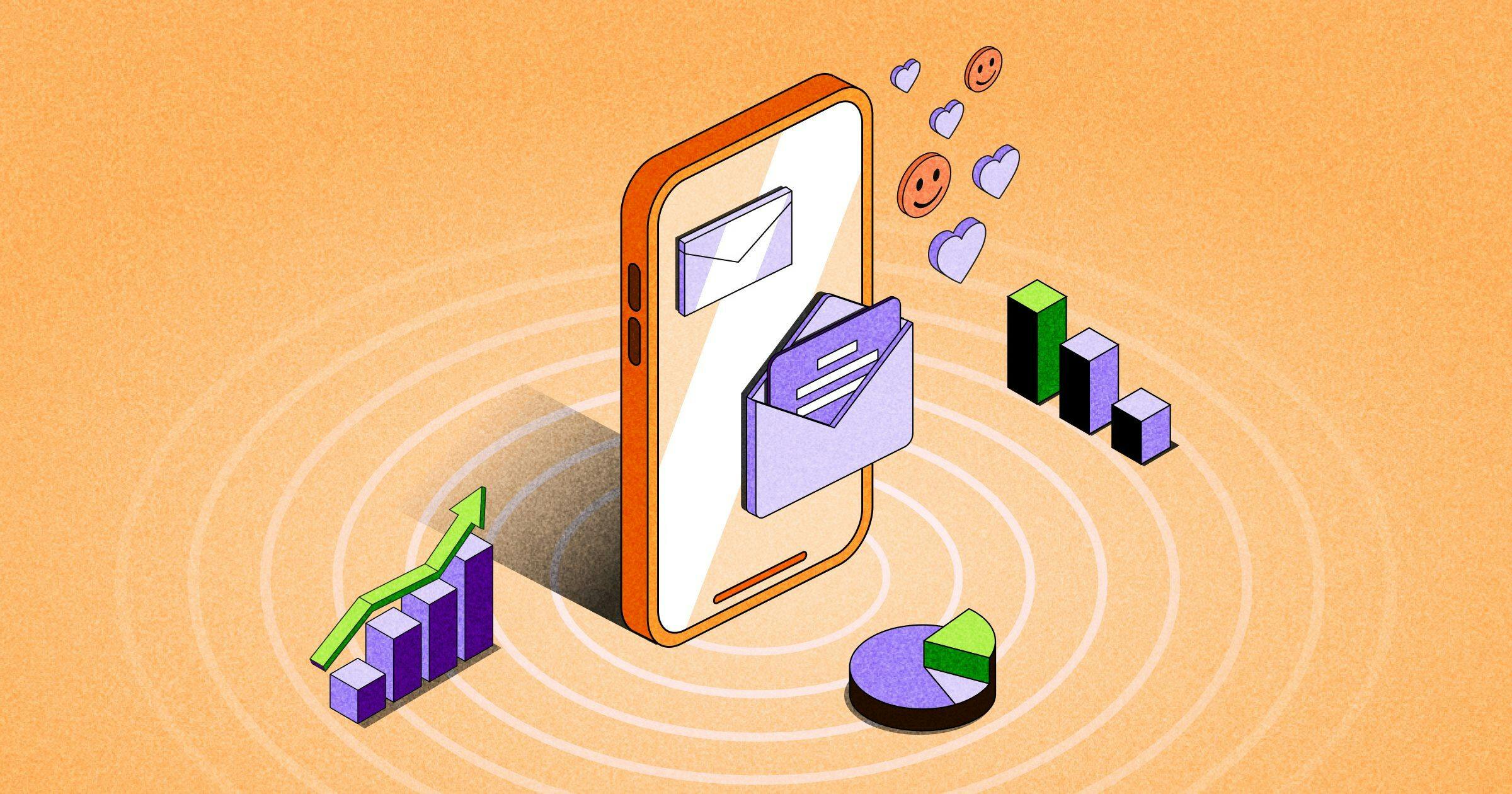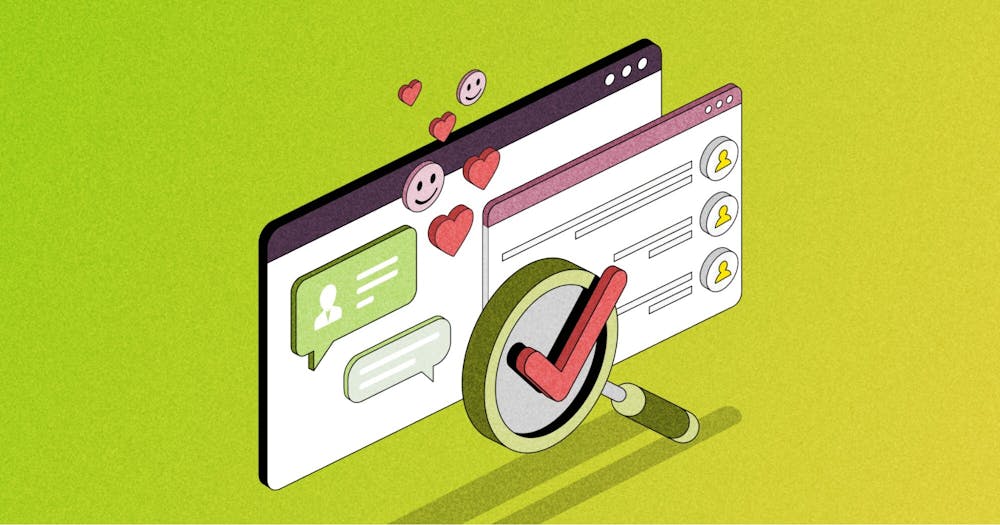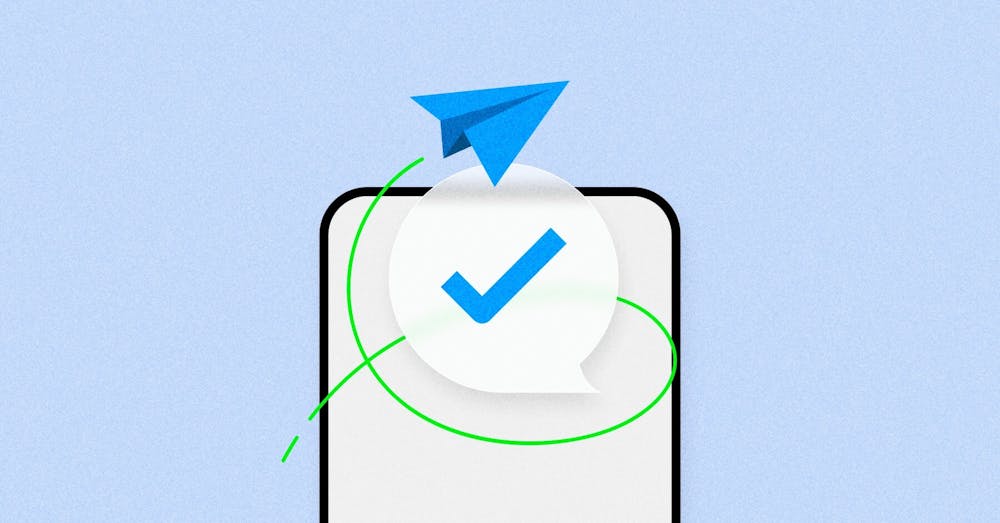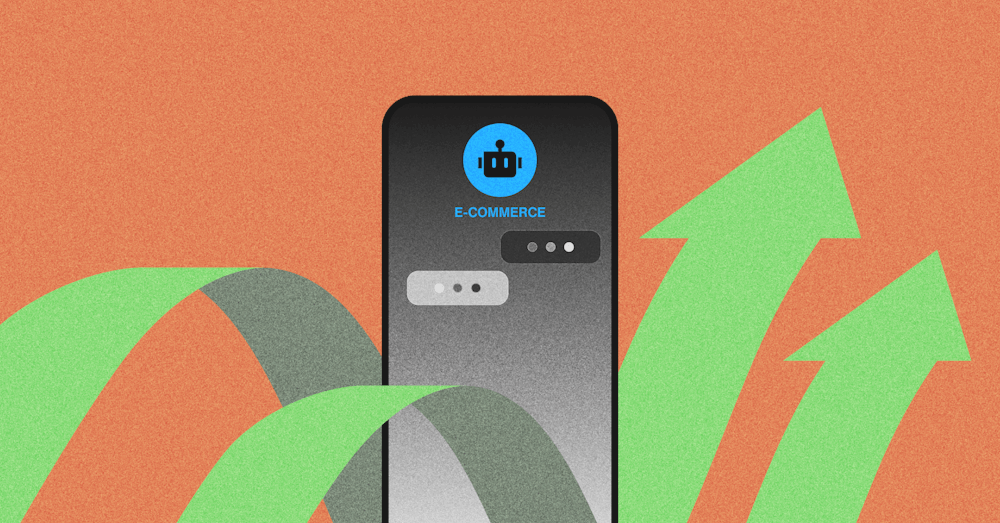SMS Marketing: Your definitive guide
The state of SMS marketing today
In a world in which 70% of us check our phones within five minutes of receiving a text message, SMS marketing—also known as text message marketing—may be the most effective way to reach your customers.
According to Statista, 60% of businesses say that SMS marketing gets higher customer engagement than all other channels. What’s more, 53% of marketing managers say that SMS has higher opt-in rates and click-through rates than all other channels.
So, what is SMS marketing? And what can you do with it? If you want to learn how SMS marketing works, this ultimate guide has all the details. Here’s what we’ll cover:
What is SMS marketing?
What is SMS?
SMS marketing benefits
SMS marketing examples
How to calculate SMS marketing ROI
The top 5 SMS marketing platforms
How to send SMS marketing campaigns
What is SMS marketing?
SMS marketing is a form of mobile marketing that uses text messaging to send promotional or informational messages to customers and prospects on their mobile devices. This SMS marketing strategy often includes special offers, discounts, shipping updates, or reminders and is designed to engage customers quickly and personally. It leverages the high open rates and immediate nature of SMS to effectively reach and influence consumers.
Given how helpful these types of communications can be, it’s no surprise that 2 in 3 people say they use SMS messaging to engage with businesses. Once someone signs up to receive SMS messages from your business—either via your website, email, or a text-to-join campaign—you can send text messages directly to their mobile device.
So what is SMS, anyway? SMS stands for Short Message Service. It allows you to send 160-character text-only messages over cellular networks to anyone with a mobile device. That said, SMS marketing isn’t limited to just text messages. You can also send your audience Multimedia Message Service (MMS) messages, which contain images, GIFs, audio files, and videos. Check out this blog for a detailed comparison of SMS vs. MMS.
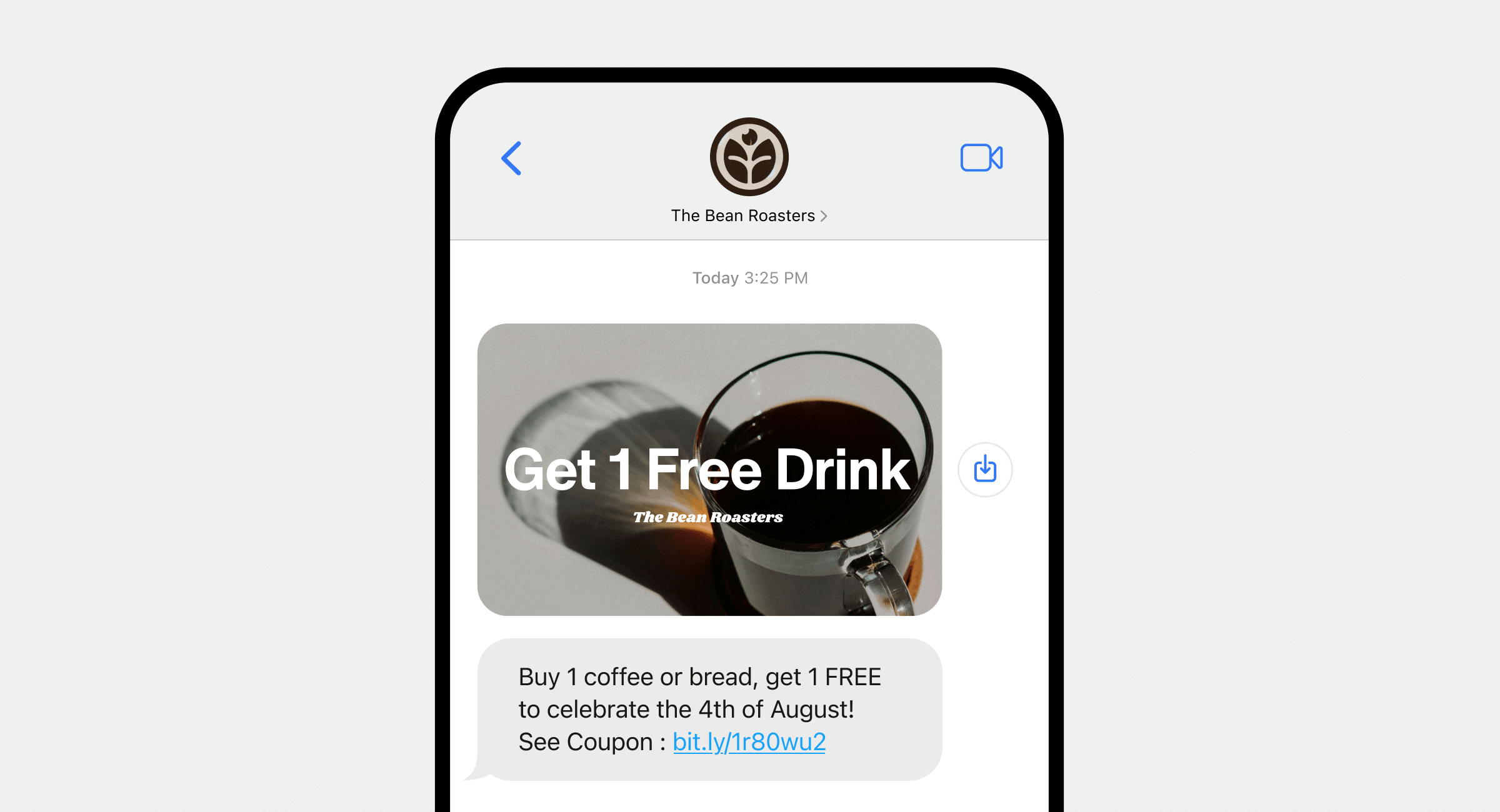
Businesses use SMS marketing to send timely, personalized communications and promotions across the customer journey. Doing so allows you to enhance customer engagement, drive product awareness and sales, strengthen relationships, and achieve a cohesive omnichannel experience.
Is SMS marketing effective?
SMS marketing is an effective way to engage and communicate directly with your audience. It offers unparalleled reach, given that the average person spends 4.5 hours each day on their phone. It also boasts some of the highest engagement and response rates of any marketing channel. For example, SMS marketing has an average click-through rate (CTR) of 36%, compared to 3% for email, 2% for social media, and 0.08% for display ads.
While our increasing reliance on mobile devices contributes to the efficacy of SMS marketing, so does our familiarity with text messages. SMS is a trusted technology that most people have been using for over 20 years. The first SMS message was sent in 1992, and by 2019, 93% of consumers said that SMS is a “trusted communications environment.” So, if you’re trying to cut through the noise with time-sensitive information and promotions, SMS marketing may be a good option for your business.
Why is SMS marketing a must-have for your business?
Various industries, such as retail, healthcare, finance, and education, rely on SMS marketing as a cost-effective way to engage customers with personalized communications. Why is SMS marketing a non-negotiable strategy for growth?
1. Immediate delivery
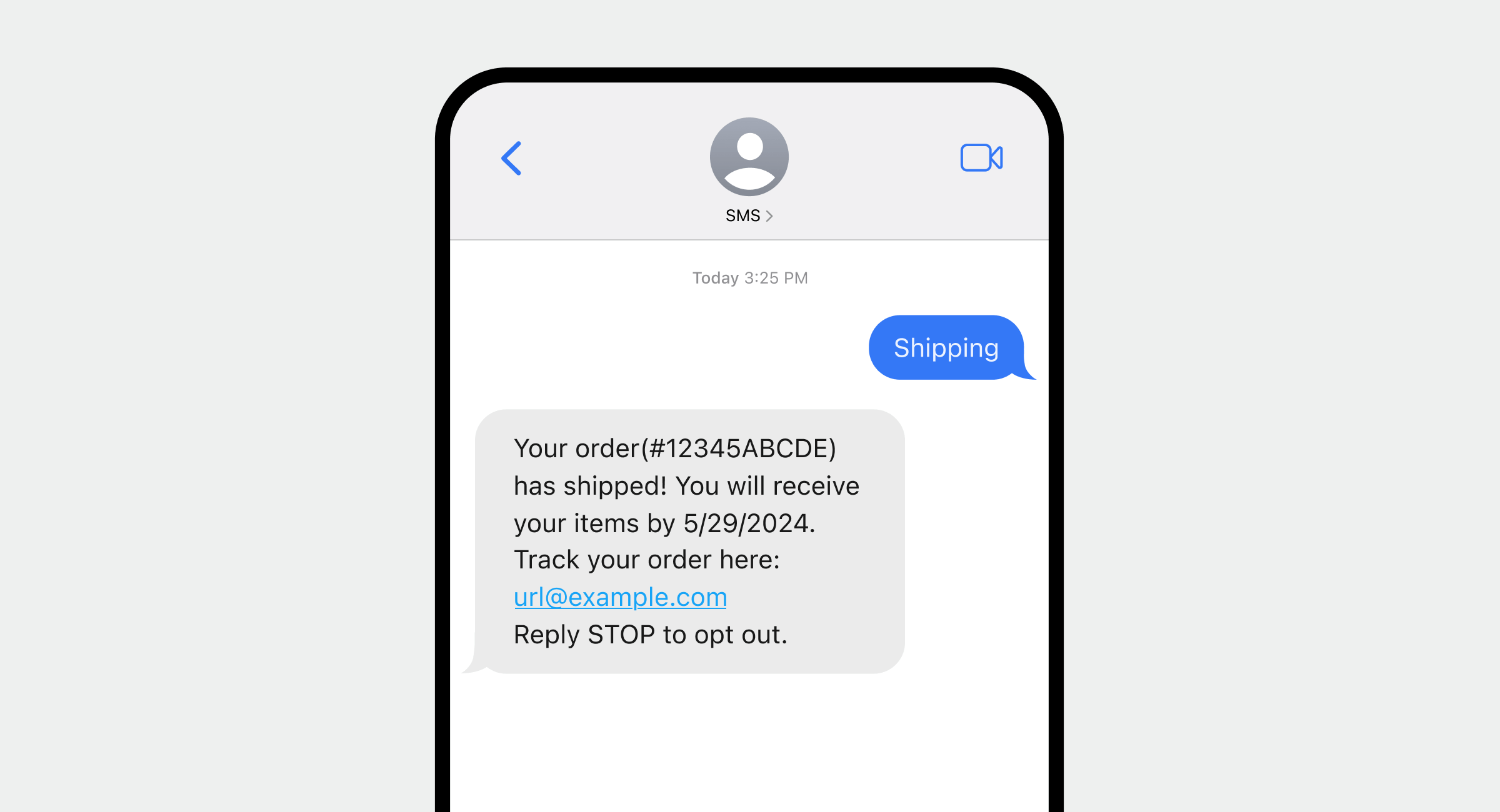
SMS messages are delivered instantly via cellular networks, making SMS marketing a great way to send time-sensitive announcements, updates, and promotions.
2. High open rates
SMS messages have an open rate of around 98%, compared to email open rates, which sit around 20-30%. Especially when personalized, SMS messages are almost sure to be seen.
3. Wide reach
SMS marketing enables you to reach a broad audience of mobile-savvy consumers. A full 97% of US adults own a cell phone, and an estimated 8 in 10 people in the US use SMS daily.
4. Cost-effective
It costs about $.09 to send an SMS message in the US (caveat: this depends on your carrier and mobile messaging plan), and bulk messaging rates are even lower. This means that SMS marketing campaigns are relatively cost-effective and typically get a high return on investment (ROI). SMS marketing is especially useful as part of a fallback strategy in omnichannel messaging. For example, if other methods of delivery, such as in-app messaging, fail, you can fall back to SMS.
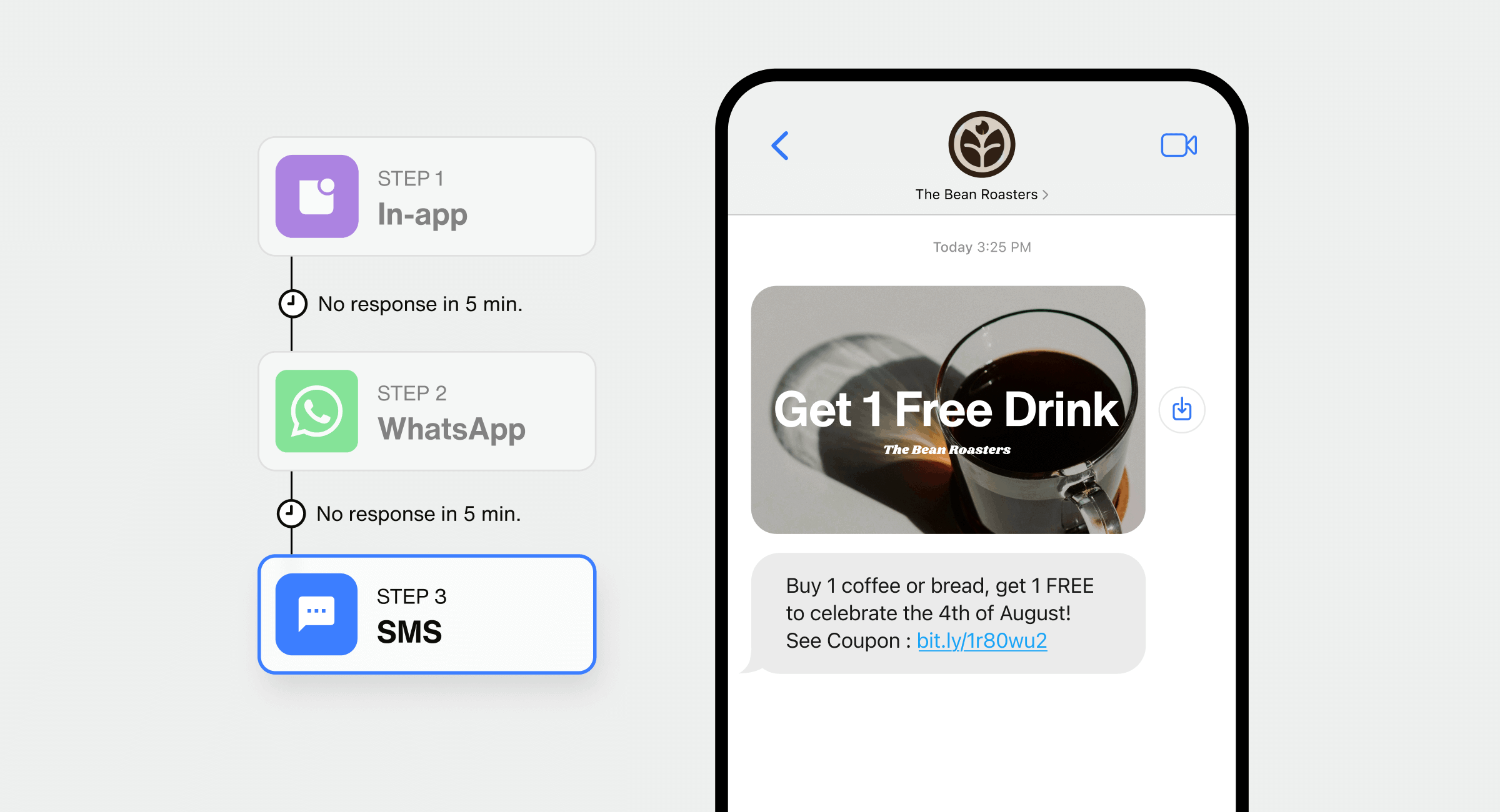
5. Easy integration
SMS marketing can be seamlessly integrated with most customer relationship management (CRM) software or even your mobile app. For example, Sendbird enables you to integrate SMS capabilities into your mobile app using a scalable, reliable SMS API.
6. High response rates
What is a response rate? A response rate is the percentage of SMS messages that generate a reply. Studies show that SMS marketing response rates hover around 45%, compared to the average email response rate of 10%.
7. Omnichannel ready
Omnichannel marketing strategies rely on SMS as a fallback for various channels, using timely SMS messages to drive traffic, engagement, and sales—and ultimately deliver a seamless experience across channels. Omnichannel campaigns have been shown to have a 250% higher purchase rate compared to single-channel campaigns.
4 types of SMS marketing campaigns
Different types of SMS campaigns allow you to engage people at different touchpoints along the customer journey. Here are the most common SMS campaigns to get you started.
1. Welcome SMS marketing campaigns
Welcome SMS marketing campaigns are how you introduce new subscribers to your brand’s SMS experience. According to one study, 93% of global consumers have signed up for an SMS program with a business. An effective welcome SMS message should:
Thank the recipient for signing up
Establish expectations for future messages
Include a link or promo code for incentives promised to SMS subscribers
Provide an opt-out link or code
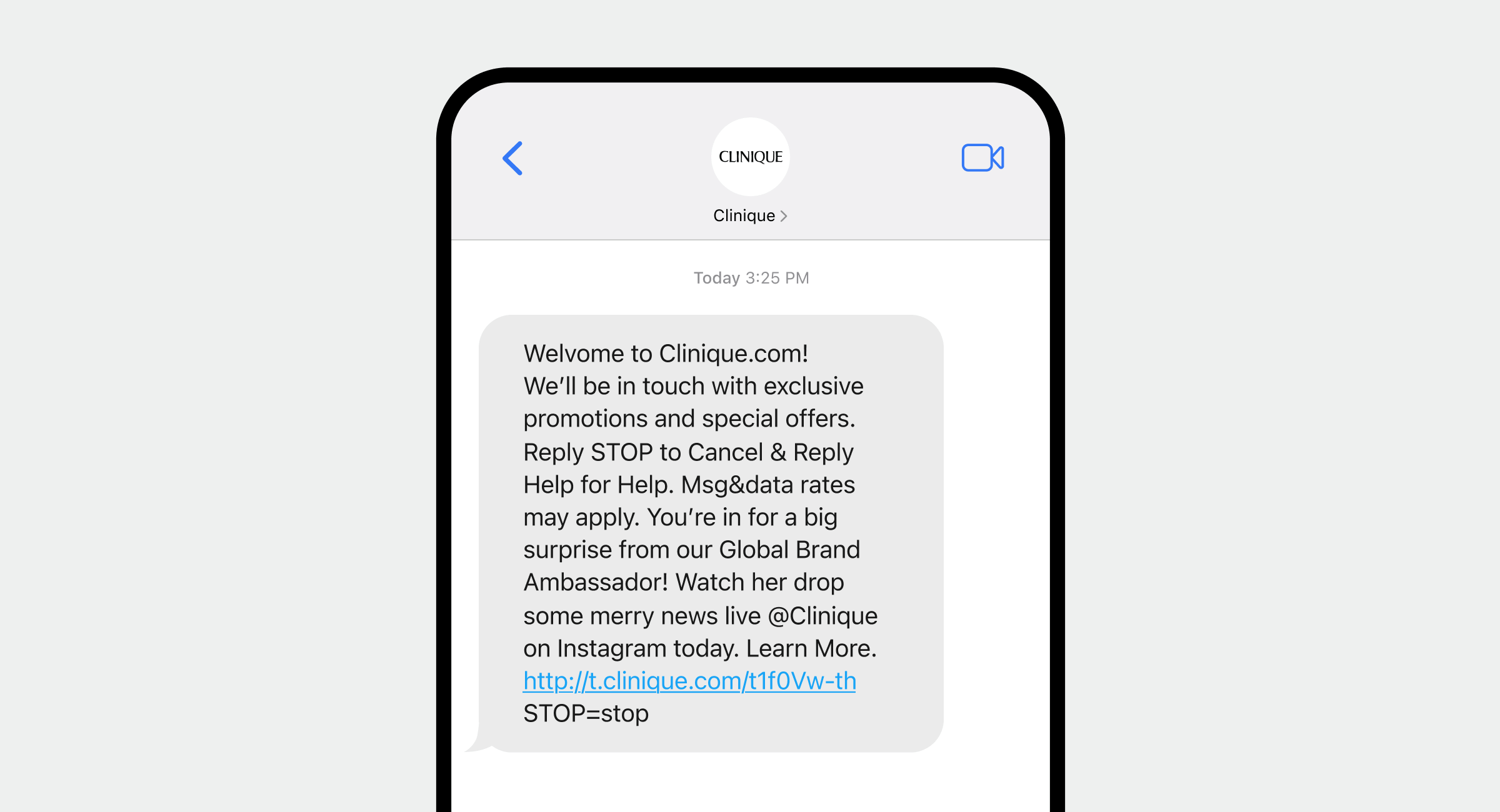
2. Promotional SMS marketing campaigns
Promotional SMS marketing campaigns are used to generate interest in a product or service. According to one survey, 54% of consumers say they want to receive marketing promotions via SMS. This can include:
Discounts
Flash sales
Coupons
Limited-time offers
For example, you can text “Check out our latest arrivals” with a direct CTA link to your website to drive traffic and give people a reason to visit.
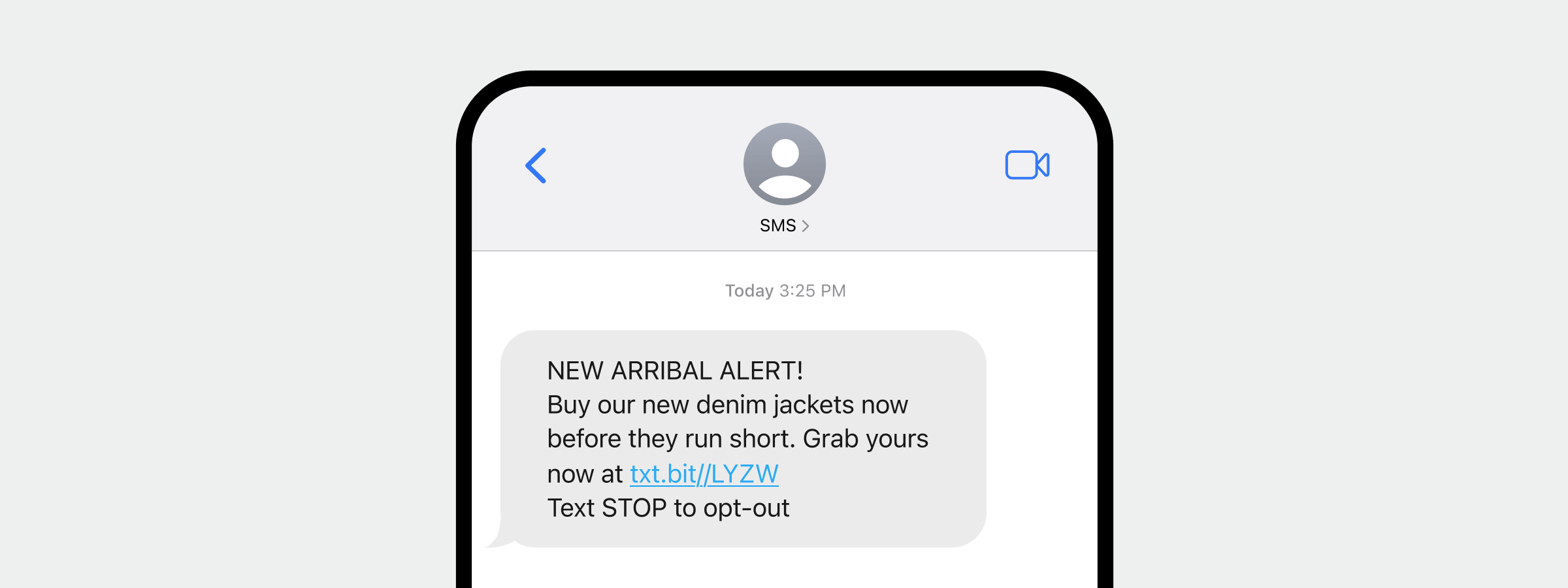
3. Transactional or operational SMS marketing campaigns
Transactional SMS marketing messages are delivered in response to an event or customer action. These campaigns are used to advance the customer journey and share time-sensitive information with customers, such as:
Appointment reminders
Order confirmations
Restock alerts
Shipping notifications
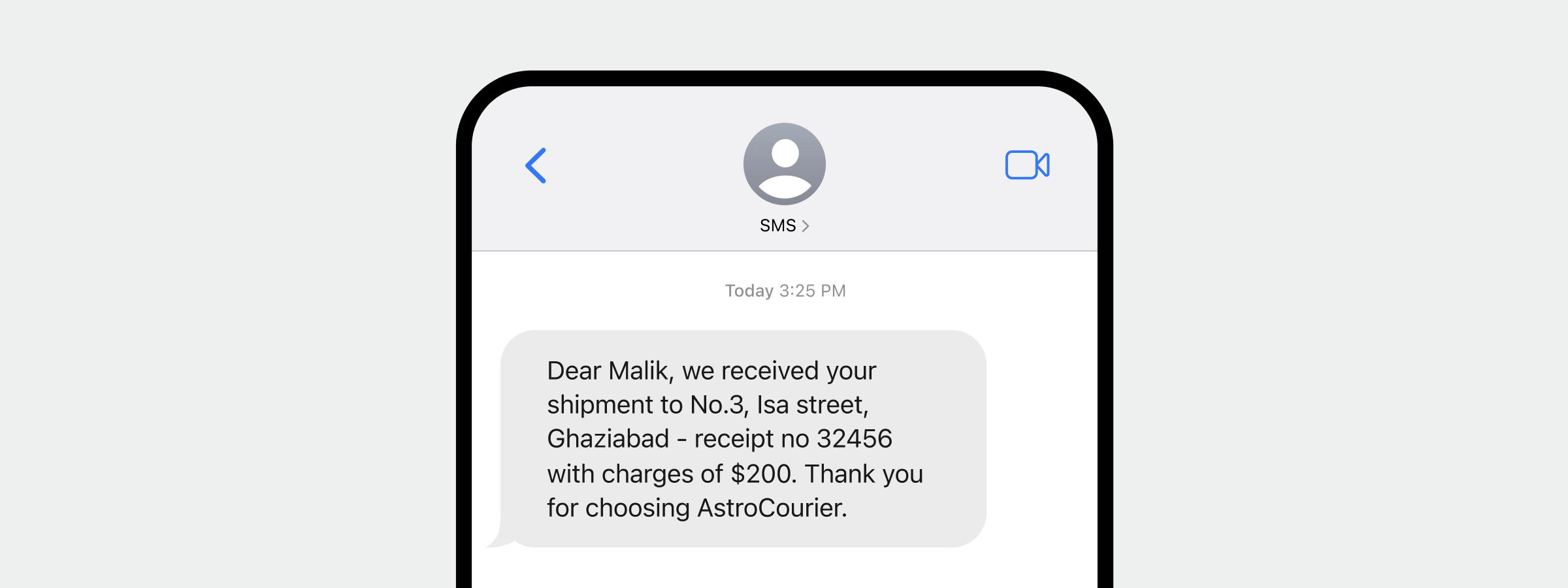
4. Customer engagement SMS marketing campaigns
Customer engagement SMS messages help you to strengthen customer relationships by engaging people with interactive content. These campaigns include:
Surveys
Polls
Contests
Giveaways
This type of campaign helps to foster interaction, generate valuable feedback, and improve customer loyalty.
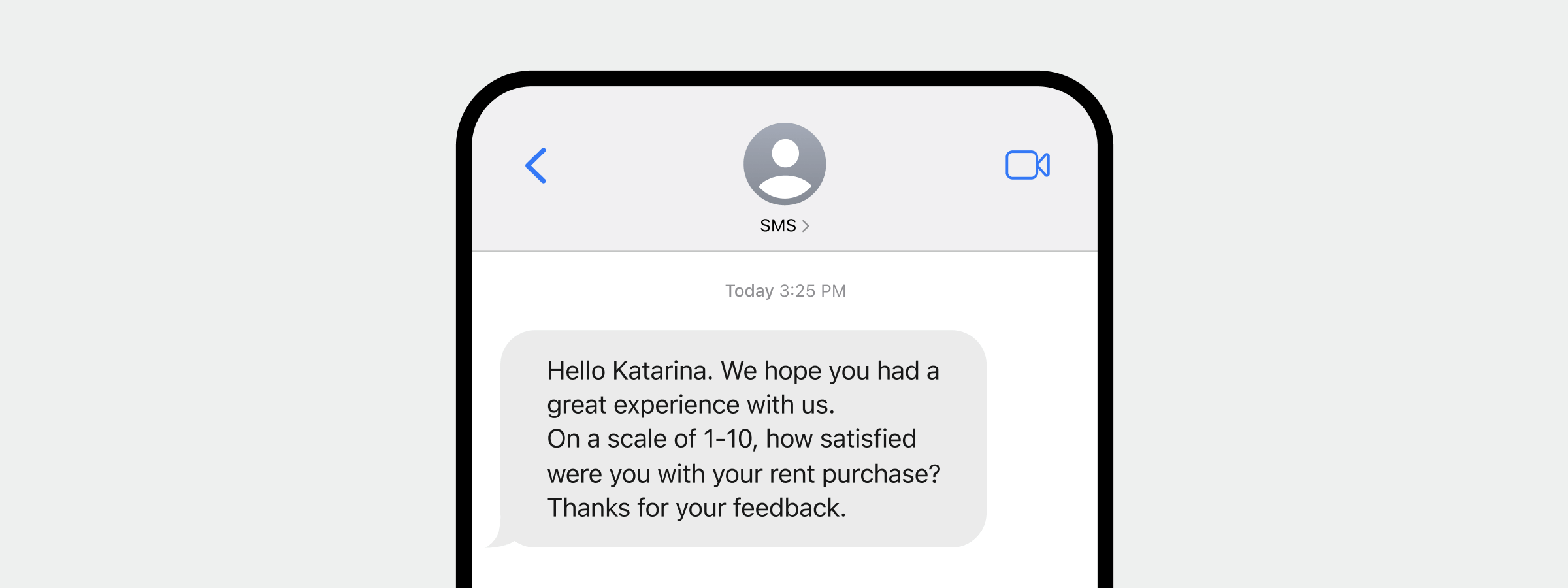
10 essential SMS marketing strategies (+ examples)
What does SMS marketing look like in action? Here are some real-life examples of SMS marketing strategies to help get you started with your own campaigns.
1. Welcome your new SMS subscribers
It’s a good idea to welcome people who sign up for your SMS marketing. This lets them know they’ve subscribed successfully while allowing you to engage them right away.
As seen below, Kinda Hot Sauce does a good job of thanking recipients with a short and sweet welcome message. It also includes a 10% off coupon, as promised to new subscribers.
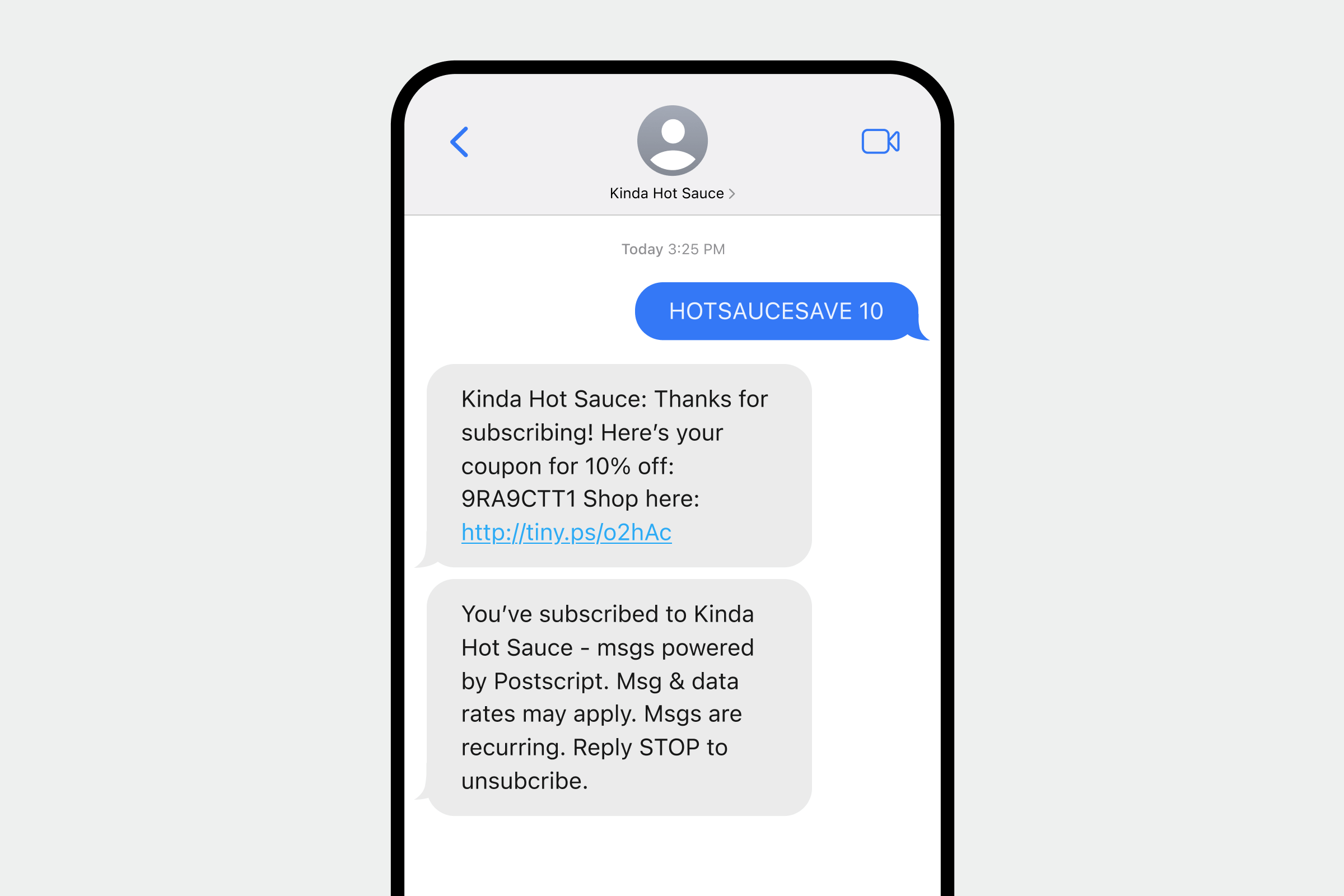
2. Announce a new product release
SMS is a great way to drive awareness and interest in new products or services. Since you’re reaching out to voluntary subscribers, you can expect higher conversions, and perhaps from customers who may not have shopped in a while.
Here, we see the eCommerce brand NanaMacs announcing its new spring collection. The message copy could be improved by including a live link to draw the eye and drive conversions.
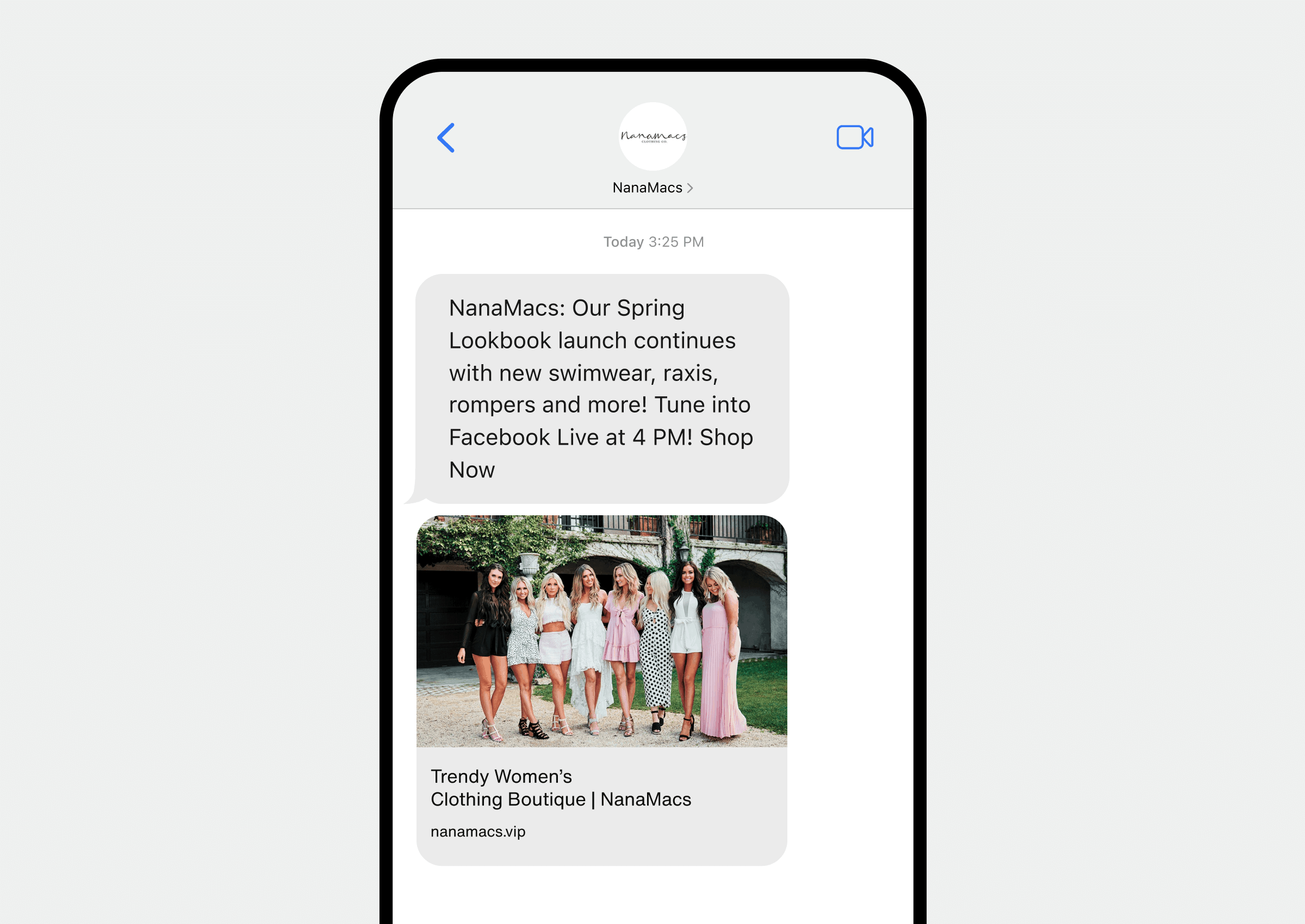
3. Announce a sale or promotion
SMS marketing is often used to promote one-off sales and seasonal promotions. That said, you may want to limit promotions to once a quarter, or your texts could start to feel spammy.
In this example, Bushbalm Skin Co. succeeds by using short, snappy copy that’s easy to read and emphasizes exclusivity to drive sales. It also uses emojis to maintain the look and feel of the brand.
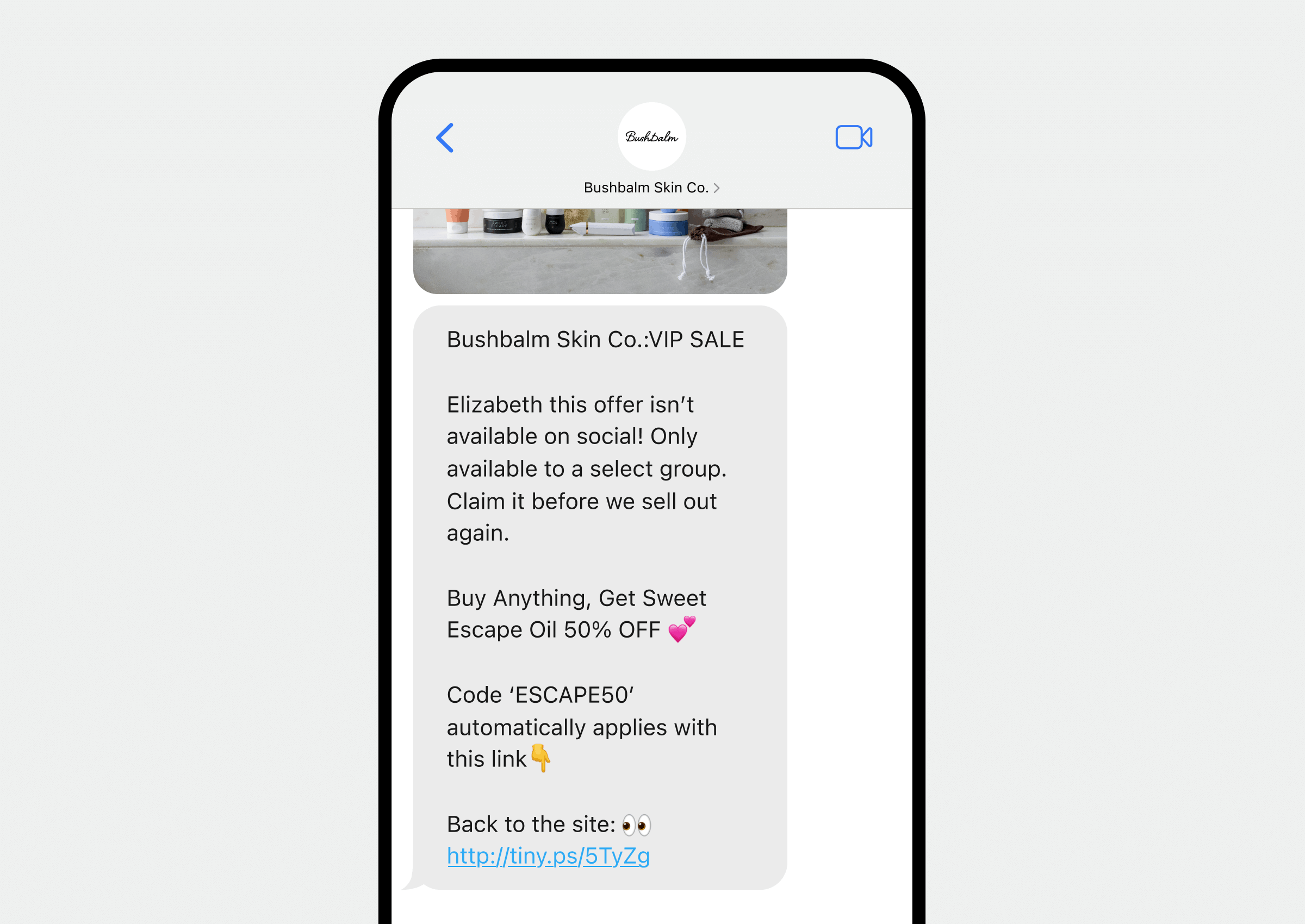
4. Send appointment reminders and confirmations
Many people prefer to receive appointment reminders and confirmations via SMS. Commonly used by service businesses and healthcare providers, this SMS marketing strategy adds convenience to the customer experience, helping to improve customer loyalty.
Here, we see Reid Medical remind a patient about a scheduled visit with a reminder SMS, which includes a link for easy cancellation or rescheduling.
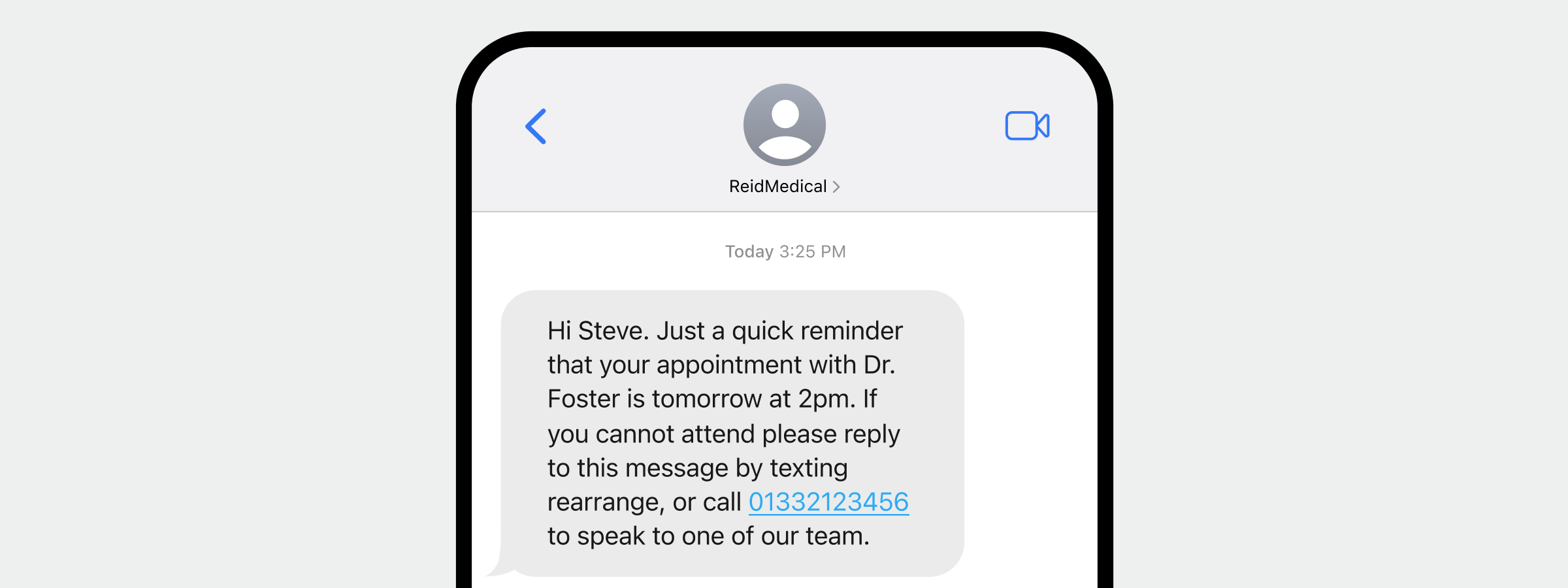
5. Send an order confirmation message
Receiving order confirmations and updates can improve customers’ peace of mind, especially for high-value purchases or recurring subscriptions. Here’s a good example from Baking Steel, which includes all the necessary parts: order confirmation, tracking information, and an unsubscribe option.
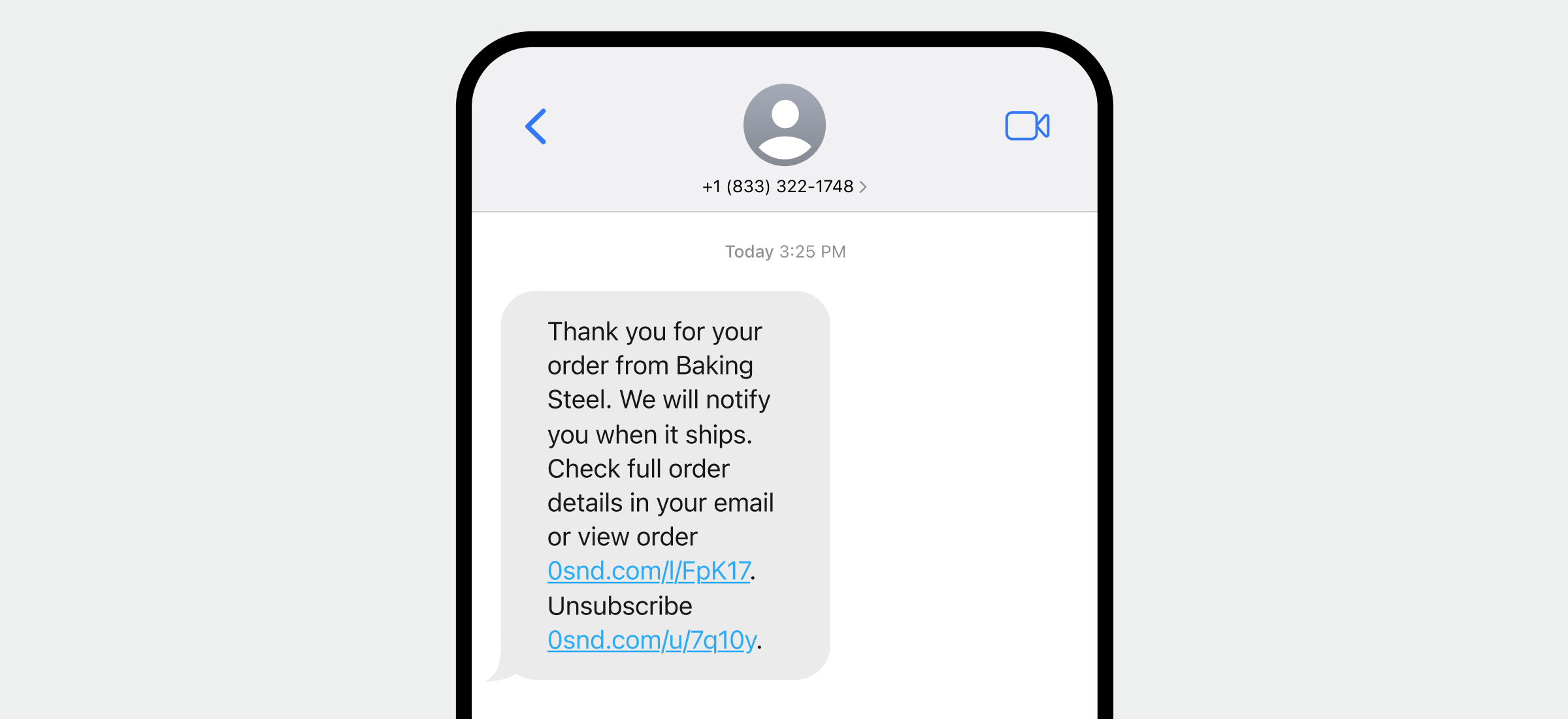
6. Remind shoppers of abandoned carts
Around 70% of eCommerce shopping carts get abandoned, but SMS marketing campaigns can help you recover that lost revenue. Here’s an example from Aerie that encourages us to finish purchasing and sweetens the deal with an offer for free shipping.
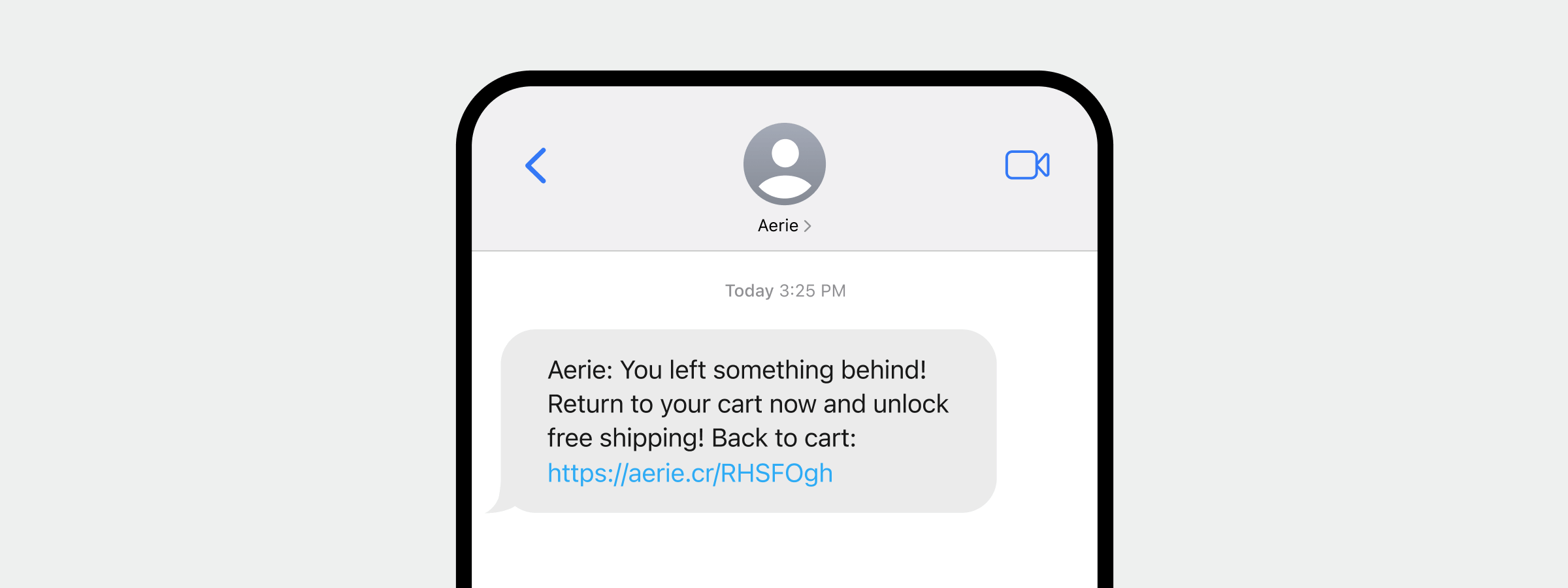
7. Notify customers when products are back in stock
It’s frustrating when a desired product is sold out. SMS campaigns offer a solution to what can otherwise be a negative experience, notifying customers when their target product is back in stock so they don’t miss out again.
Check out how Brevite uses SMS to alert customers that a popular item is back in stock. The message copy evokes urgency and scarcity, and then a coupon code is offered to drive conversions.
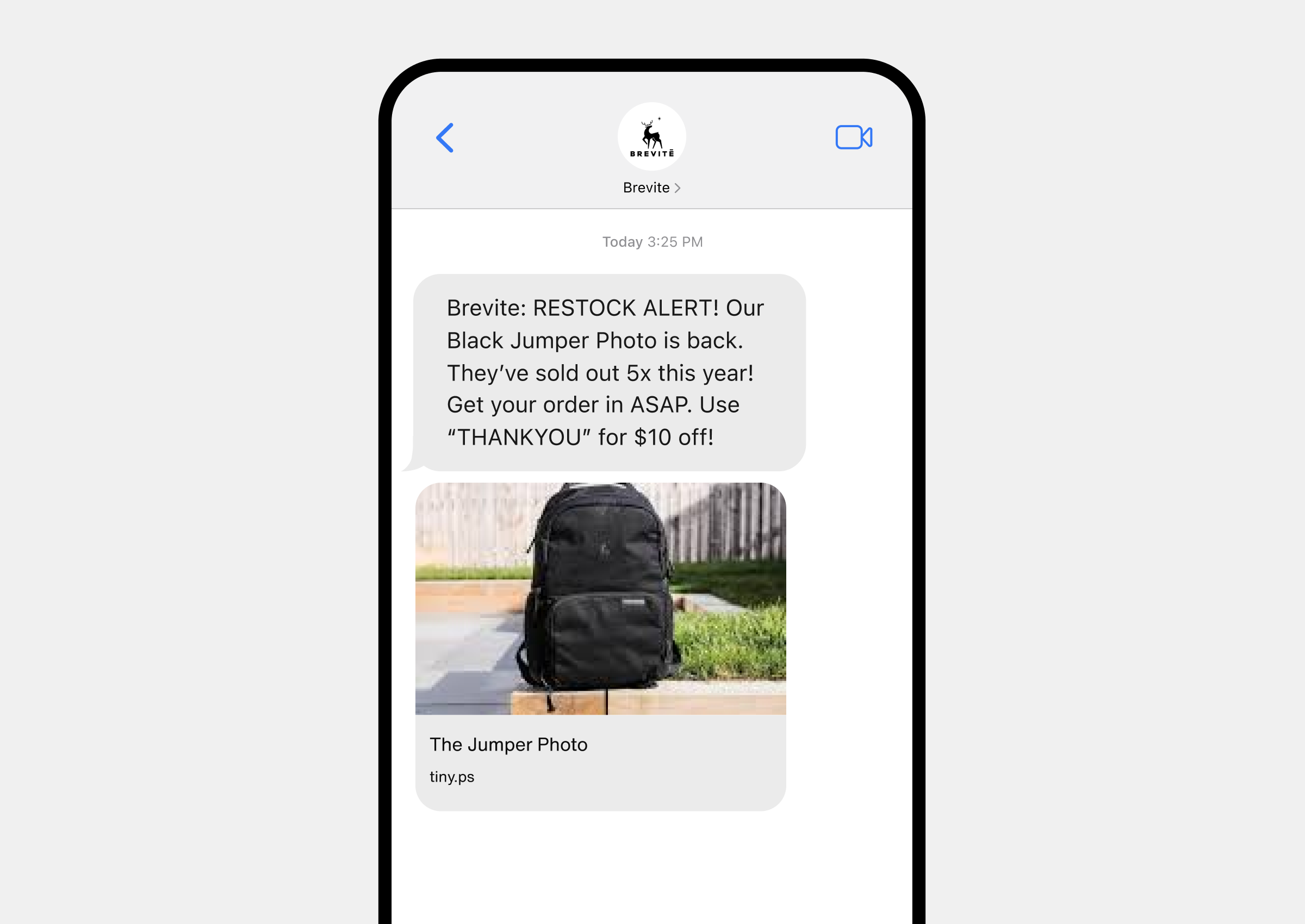
8. Gather customer feedback
Collecting customer feedback is vital to business improvement. With SMS marketing, you can create a survey and then send a link to subscribers to learn about their experiences, opinions, and preferences.
Alternatively, as Refresh Financial does below, you can ask customers to rate a recent experience and then follow up with unsatisfied customers to identify areas for improvement.
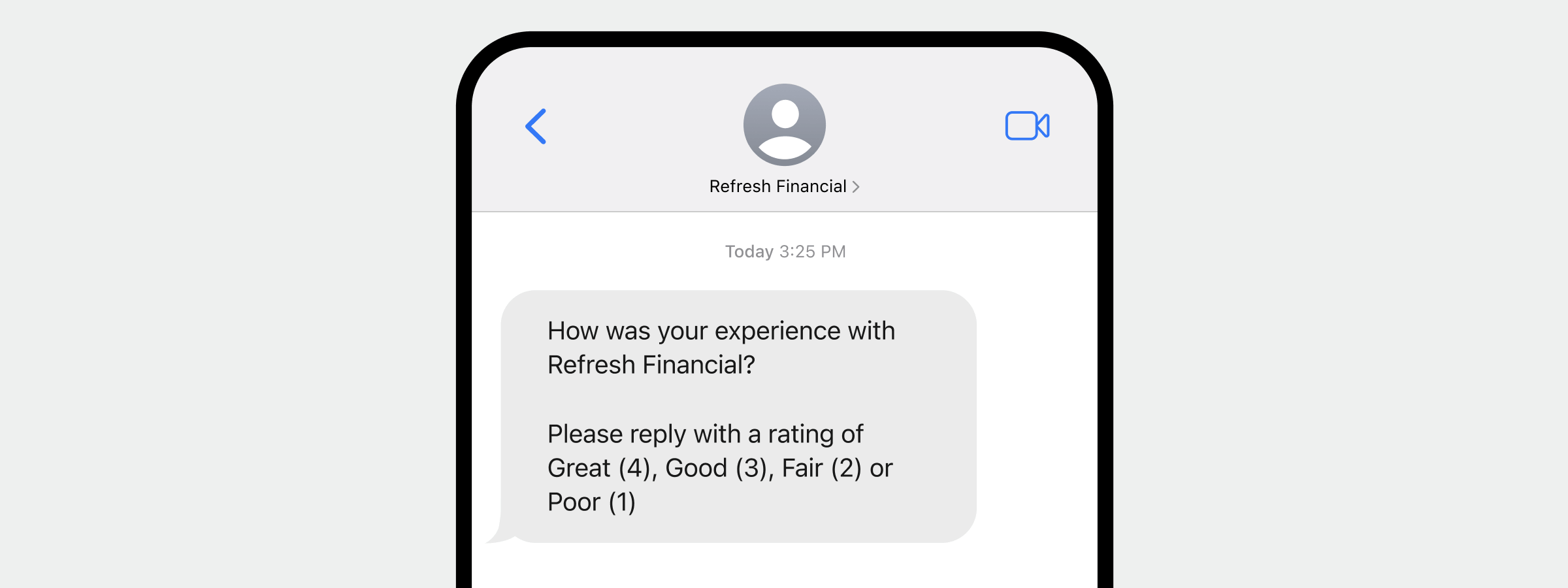
9. Promote online and in-person events
SMS marketing is a great way to get people excited about an upcoming event. Your SMS event reminders can include the event date, time, and location, as well as a CTA to purchase tickets or reserve a spot.
Below, the Healthcare Technology Awards sends an event invite with a QR code and includes key details like date and time to ensure attendees are ready for the big show.
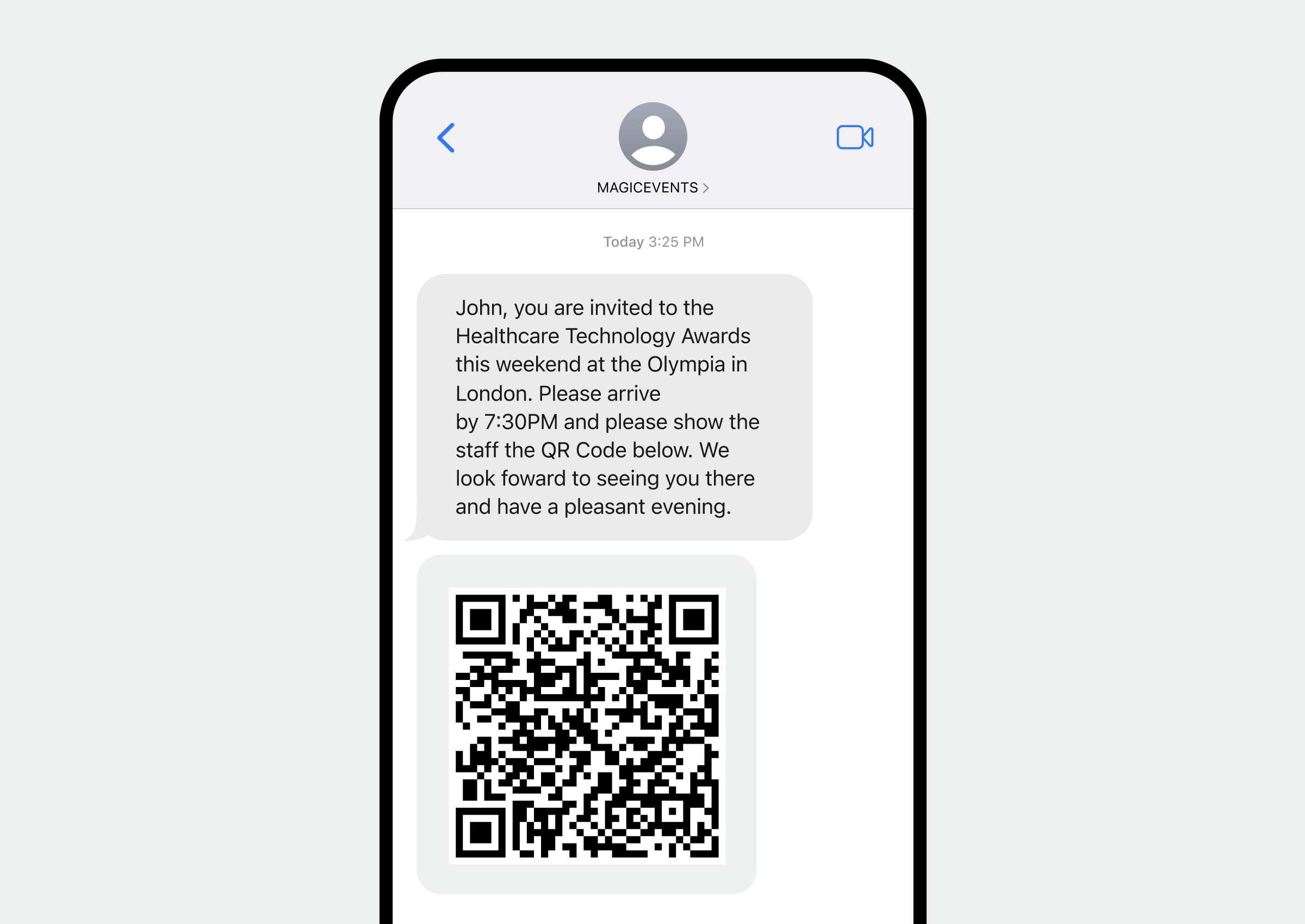
10. Enhance your customer loyalty program
More intimate than email and more direct than social media, SMS is a great channel for leveling up your loyalty program. This SMS strategy helps keep members informed about their rewards balance, special events, or exclusive offers.
Here’s how a supplement company uses SMS for loyalty campaigns: the company sends a personalized reminder about redeeming rewards points with a redemption link CTA.
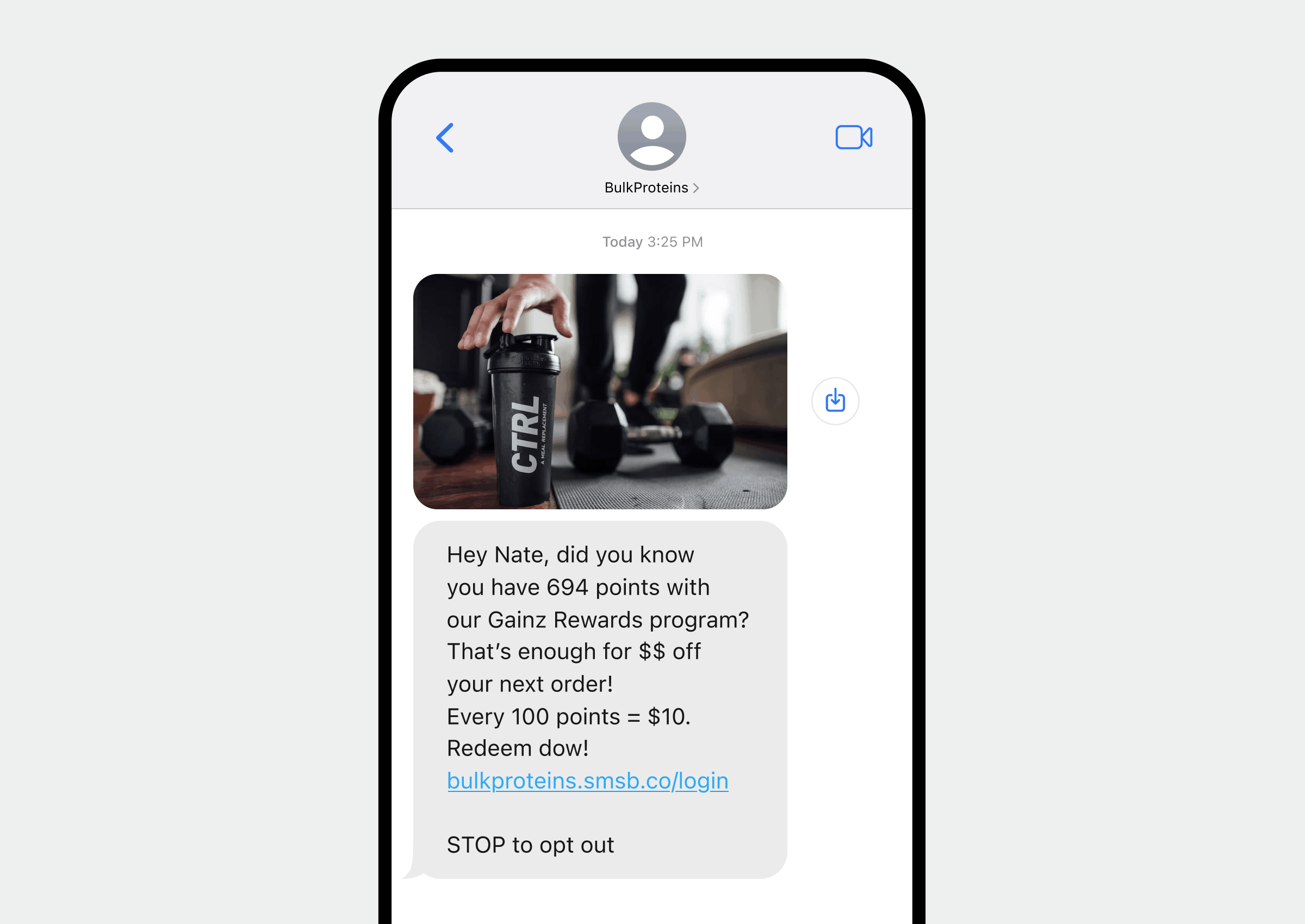
How to stay compliant with SMS marketing regulations
Is SMS marketing legal? Yes, 100%. However, there are a few regulatory requirements to consider.
In the United States, Canada, and Europe, it’s against the law to text customers who have not given you explicit permission to do so. Every US business is governed by the laws of the Telephone Consumer Protection Act (TCPA) and the CAN-SPAM Act. If you’re messaging people in the European Union (EU), SMS regulations are governed by the General Data Protection Regulation (GDPR).
To ensure SMS marketing compliance under these regulations, you’ll want to:
Obtain explicit consent (opt-in) from recipients before messaging them
Provide recipients an easy way to opt out (Reply with “STOP”)
Respect do-not-call lists
Observe time restrictions for messaging (daytime only, usually)
Identify your business clearly in the message body
In the US, SMS regulations also vary by state. For example, California doesn’t allow a business to record SMS messages without first obtaining consent. In Florida, SMS marketing isn’t allowed outside normal business hours. In industries like healthcare and finance, businesses are required to observe industry-specific guidelines for how sensitive recipient data is secured and stored.
For exact guidelines and best practices to help you navigate SMS compliance without risk, you can check out resources from CTIA, an organization that regulates wireless communications in the USA.
You can also use certain SMS marketing platforms, like Sendbird, which come with built-in features for managing user communication preferences and compliance by region and industry.
Calculating SMS marketing ROI: Key metrics to track
Whether you’re out to drive sales, keep appointments, or strengthen relationships—here are the KPIs to watch as you measure the success of your SMS campaigns.
Delivery rate: The percentage of messages that successfully reach recipients. A high delivery rate suggests a quality subscriber list, but a low delivery rate indicates you might need to prune old numbers from your list.
Open rate: This is a measure of immediate engagement and can reflect whether your messaging frequency should be tuned up or down.
Click-through rate: The CTR is the percentage of recipients that click the CTA link in your message. This reflects the quality of your message copy and CTA.
Unsubscribe rate: This shows you how many people opt in after receiving your SMS and suggests the relevance and value of your messaging.
Tools for tracking the ROI of SMS campaigns
Tracking links: You can track the effectiveness of your SMS campaigns using URL link shorteners such as bit.ly, or with Urchin Tracking Modules (UTMs). Tools like bit.ly allow you to set UTMs.
A/B testing: Experimenting with different SMS message copy and CTAs allows you to determine which message variations perform the best and guides you in making strategy decisions.
SMS marketing platforms: Top SMS marketing platforms come with built-in analytics features for tracking campaign performance, including real-time data on delivery rates, open rates, CTR, and conversion rates.
CRM and analytics integration: If your SMS platform doesn’t include analytics features, you can integrate it with your Customer Relationship Management (CRM) system and a web analytics tool like Google Analytics. Then, set up tracking for certain goals and see what happens after recipients receive a text message.
The 5 top SMS marketing software
Among the 86% of businesses that use SMS marketing, many choose to support their efforts with SMS marketing platforms. Here’s a short list of the category leaders.
1. Sendbird
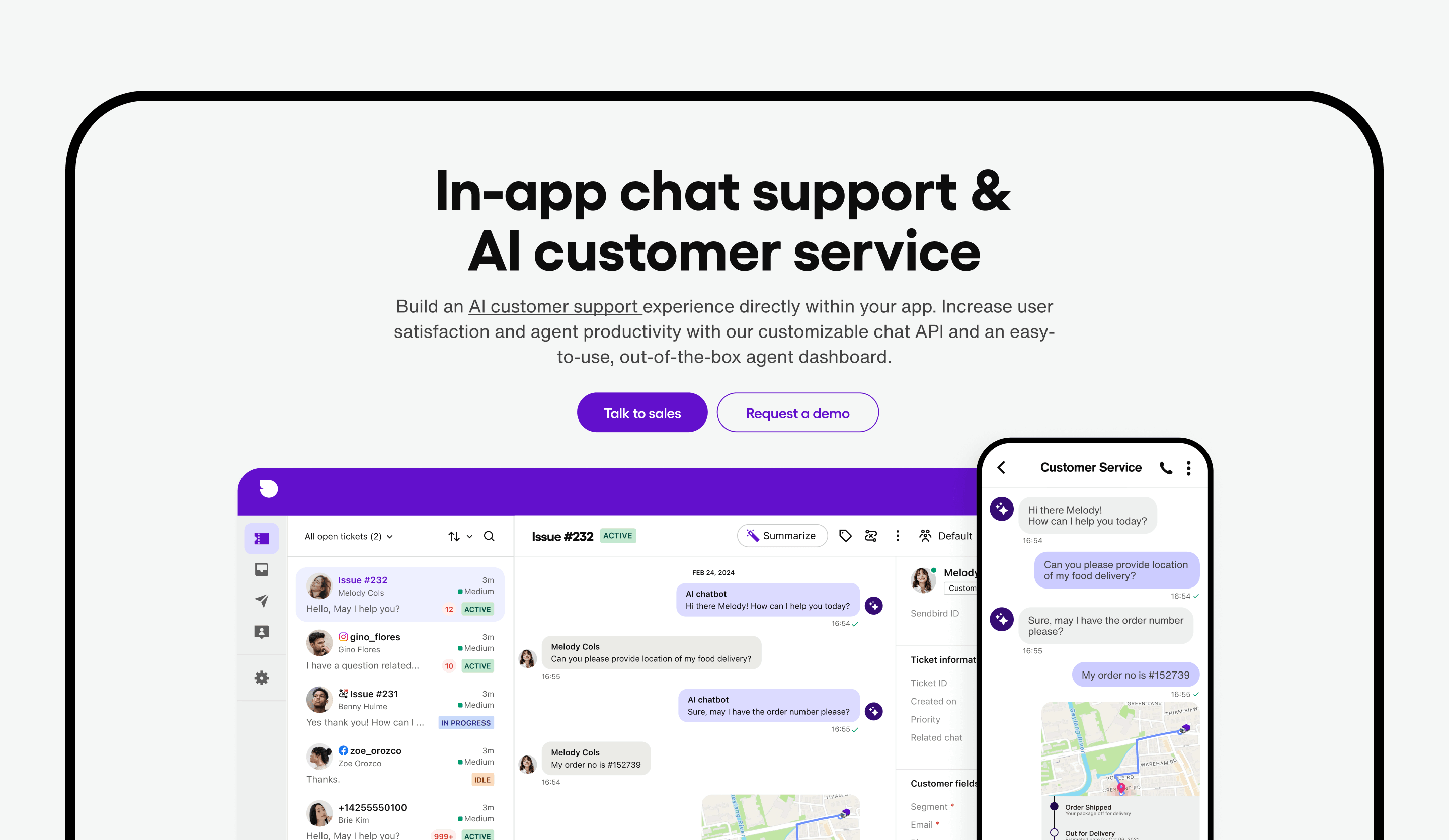
Sendbird is an omnichannel business messaging platform that enables you to launch, monitor, and automate your SMS marketing campaigns in one place. You get all the tools to build a modern, scalable SMS experience that’s unique to your brand with a developer-friendly SMS API. Use campaign builder templates to get started quickly, programmatic channel scheduling for multi-campaign automation, compliance management features, and much more.
Pros: Flexibility, branding, and customization
Cons: Designed for developers
Pricing: SMS pricing is usage-based. Please contact Sendbird for customized pricing.
2. Attentive

Attentive is an AI marketing platform that helps you create and personalize SMS and email campaigns. Serving retail and apparel brands, you can integrate your email subscriber list and deliver targeted messages to your audience segments.
Pros: Customer support, ease of use
Cons: Reporting issues, expensive
Pricing: $300/month, plus $0.01 per SMS and carrier fees
3. SlickText
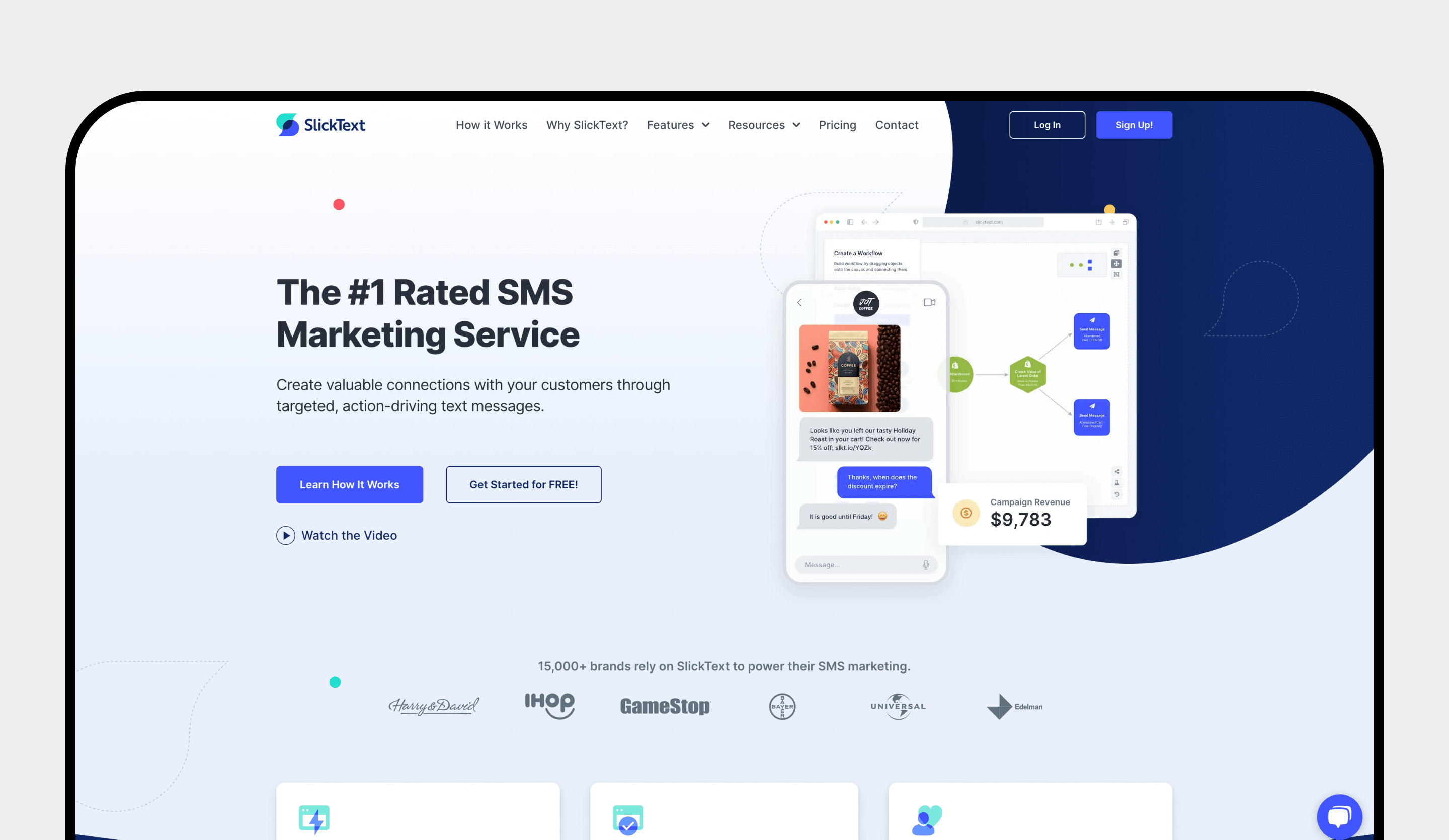
SlickText is an SMS marketing platform that helps you build relationships with personalized text messaging. You’ll get the standard features for SMS marketing, like mass texting, message scheduling, two-way messaging, analytics, and tracking reports.
Pros: Ease of use, customer support
Cons: Expensive, SMS issues
Pricing: $29.99 for 500 texts/month, $49/99 for 1,000 texts/month
4. Klaviyo
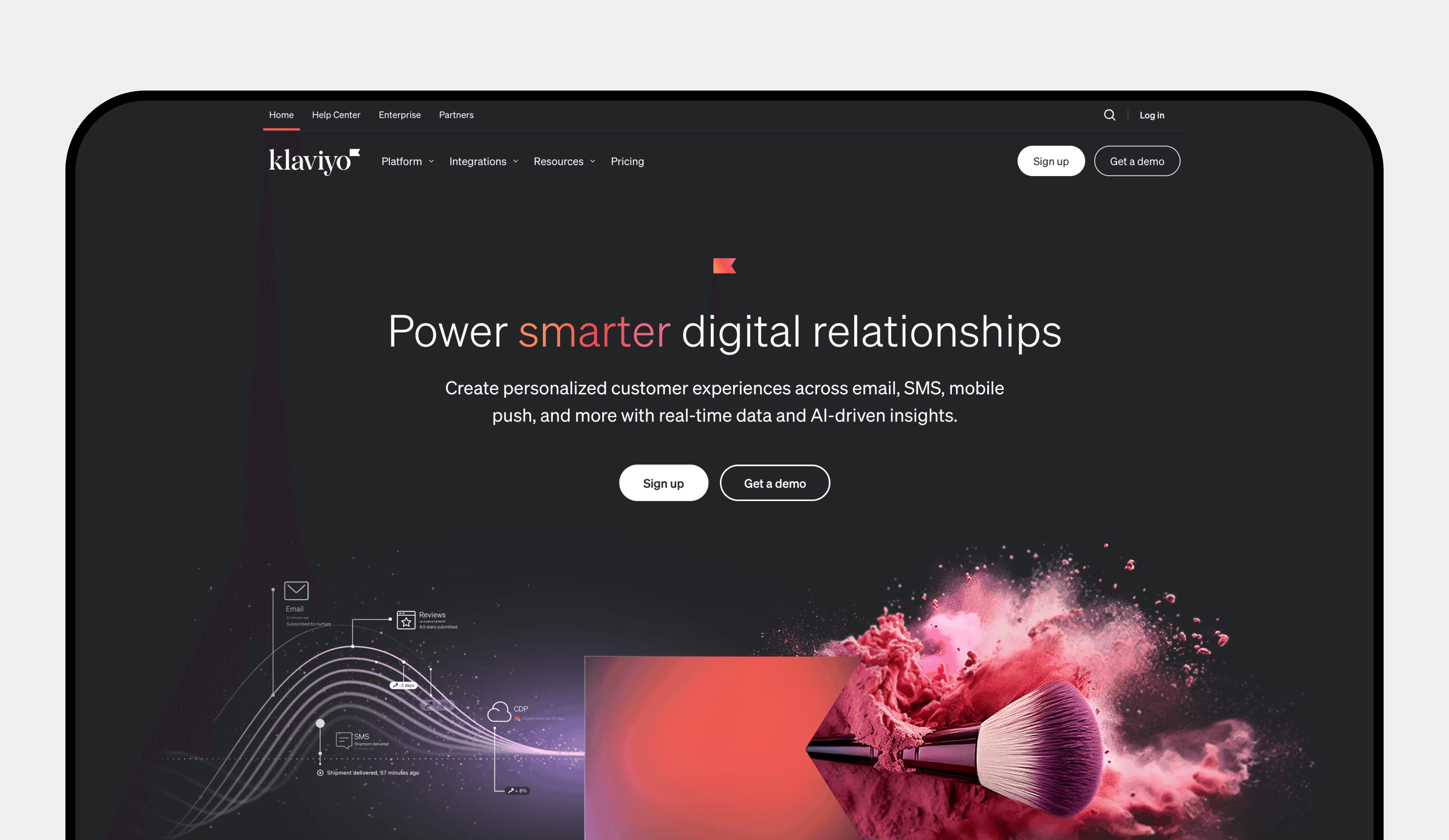
Klaviyo is a marketing automation platform for sending personalized SMS and email campaigns. It includes features like A/B testing, templates, segmentation, and more to help you send the right message to the right person.
Pros: Easy integration, easy to use
Cons: Learning curve
Pricing: $15/mo for up to 1250 SMS/MMS credits
5. Birdeye
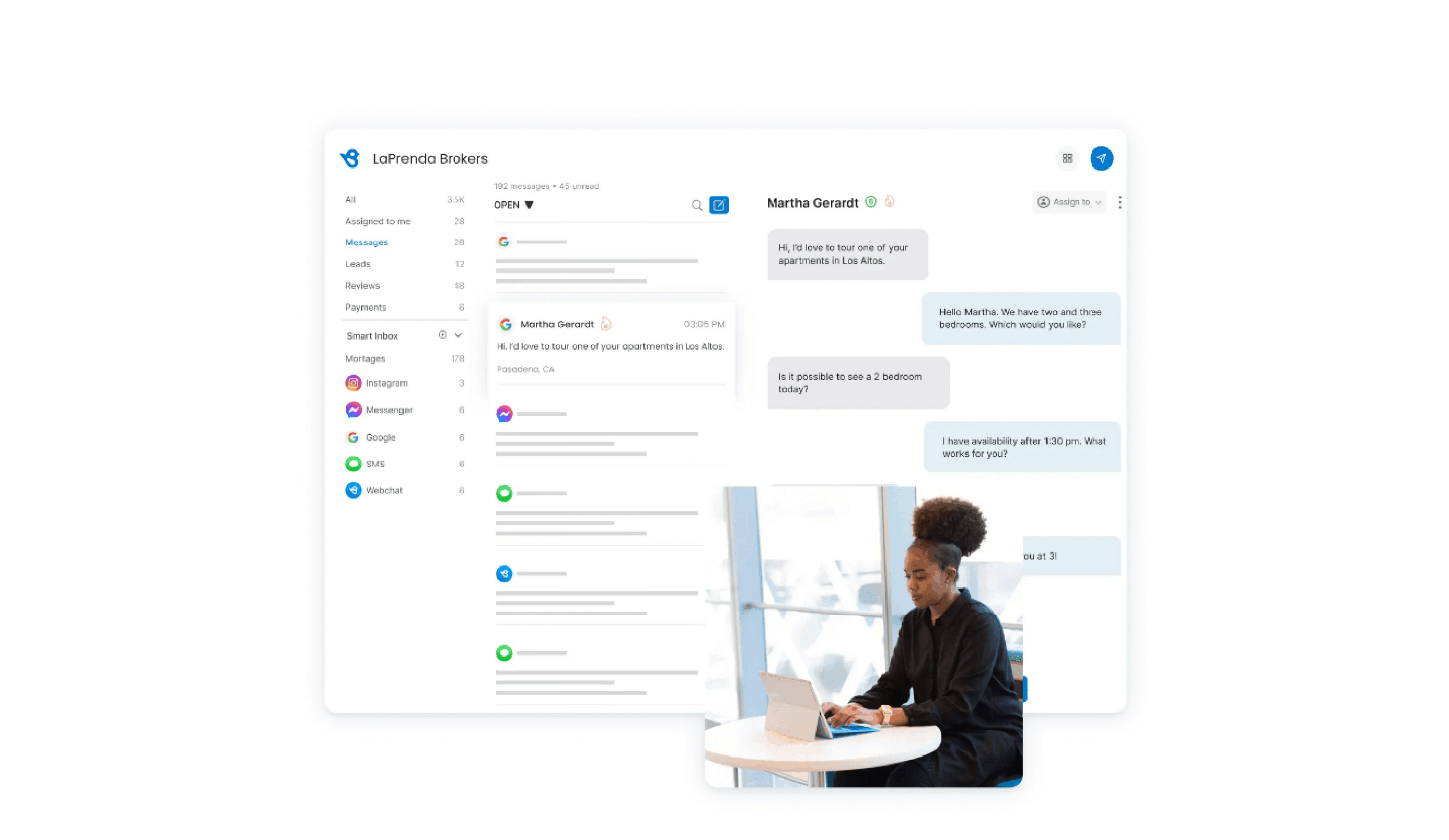
Birdeye is a reputation management and digital customer experience platform that includes SMS marketing campaigns to boost the performance of other channels, such as social media.
Pros: Customer service, easy integration
Cons: Integration issues, learning curve
Pricing: Starts at $299/mo for a single location
How to start sending SMS marketing messages
If you’re ready to start SMS marketing, the first step is to decide whether to buy or build your SMS messaging solution. Your budget, team resources, and scalability needs are important factors to consider.
Ultimately, building an SMS solution provides you with total flexibility and control over the look and feel of your messaging experience, which can directly impact the performance of your SMS marketing. Out-of-the-box solutions may be easier to roll out, but they are limited in their customization, features, and compliance.
Once you pick an SMS solution, sending your first (or 100th) SMS is pretty easy. If you’re thinking of building an SMS solution, Sendbird Business Messaging is a scalable SMS API that’s perfect for developers. It comes with user-friendly SMS software that makes it easy to succeed with SMS marketing.
Here’s how to get started with Sendbird’s SMS marketing platform.
1. Create a free Sendbird account
Sign up for a free Sendbird account. It’s totally free, and no credit card is required.
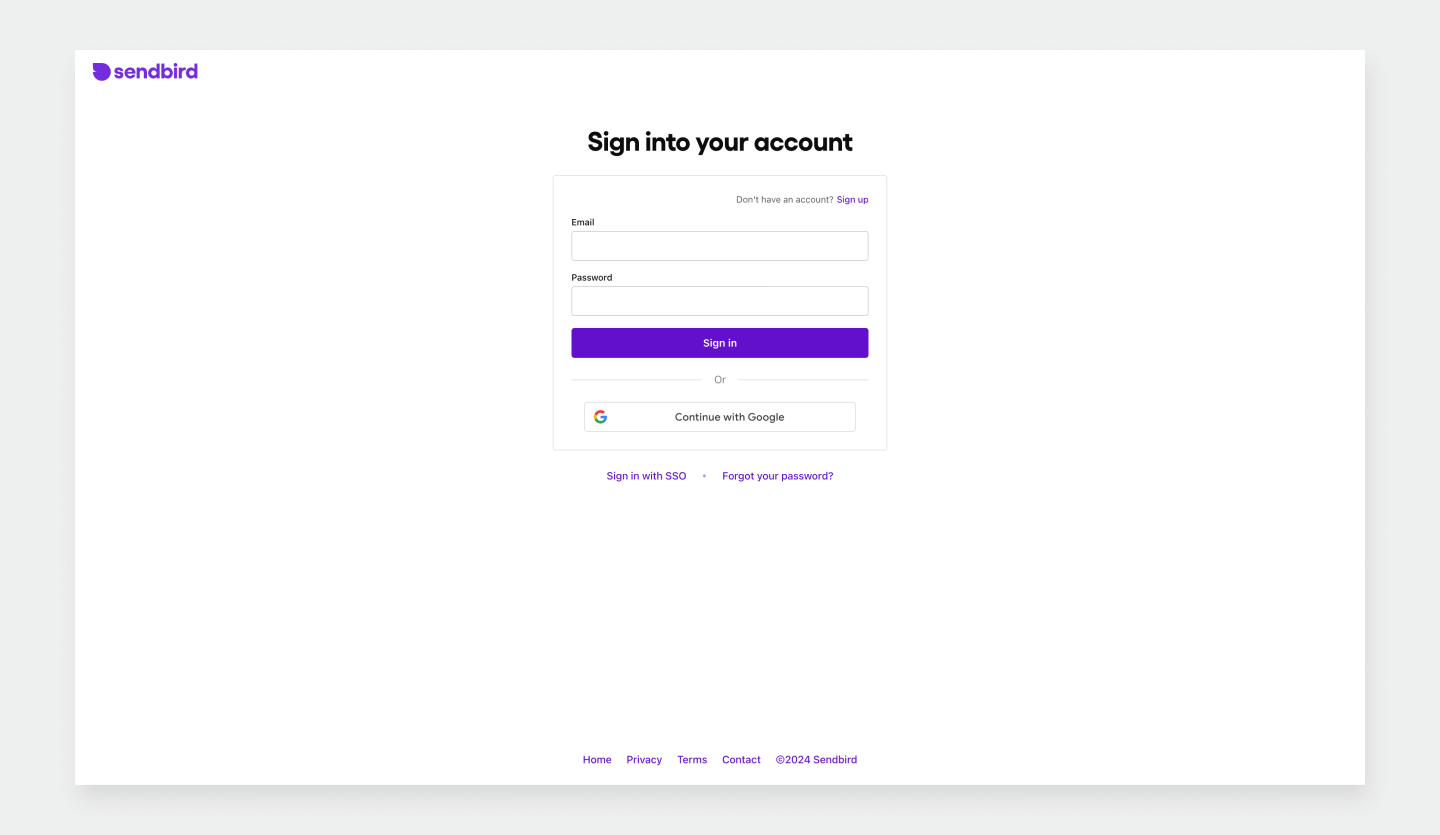
2. Build your opt-in list
To build a list of SMS subscribers, you’ll start by adding a signup form to your website, email campaigns, or social media campaigns. Typically, you’ll offer incentives like discounts or gated content in exchange for joining your SMS list. List building takes time, but if you’re offering a desirable incentive, you’ll start gaining subscribers right away.
3. Pick a phone number type
You can message people from a few types of phone numbers, including:
Toll-free
High-throughput toll-free
A2P 10DLC
Short code
The type of number you choose will impact your cost per message sent, the number of messages you can send in a given time (throughput), compliance requirements, and more.
4. Customize your messaging experience
For best results, you’ll want to customize your SMS messages to your unique business and campaigns. With our campaign builder templates, you can add emojis, rich media like GIFs and videos, change message copy and CTAs, and more. We also give you SMS SDKs that allow you to customize the look and feel of your SMS messages, including the color, layout, and more.
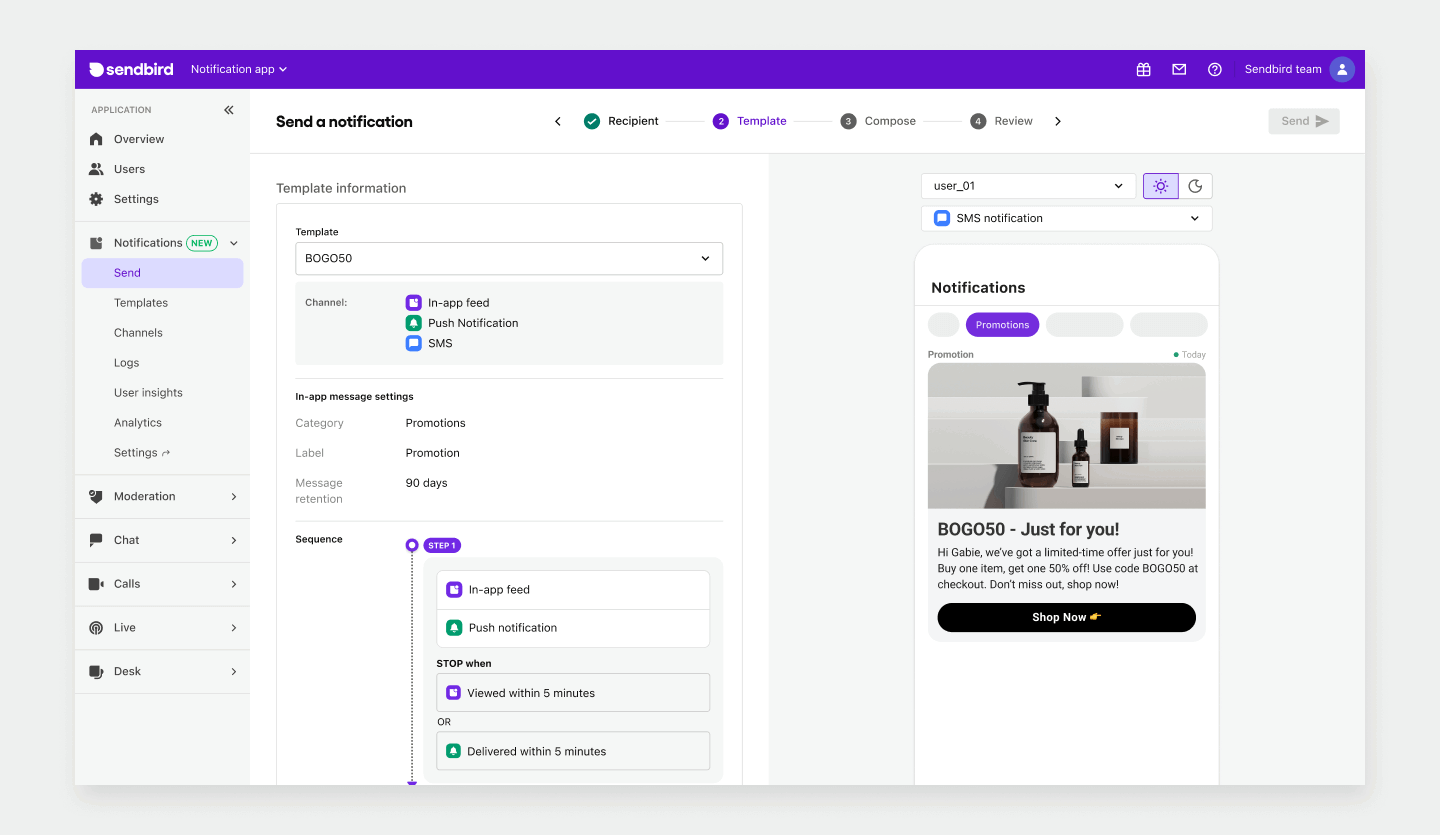
Get started with SMS marketing today
If you’re looking to engage your audience in the moment with time-sensitive announcements, reminders, or promotions—SMS marketing may be a good option for you. This increasingly popular marketing strategy can help you drive sales and engagement, strengthen your customer relationships, and achieve a truly unified omnichannel experience.
Ready to send your first SMS marketing message? It's easily done with Sendbird Business Messaging. You can also get started with a free trial of Sendbird - no commitment or credit card required.
Have questions not covered in this blog? Please feel free to contact us or request a demo.

